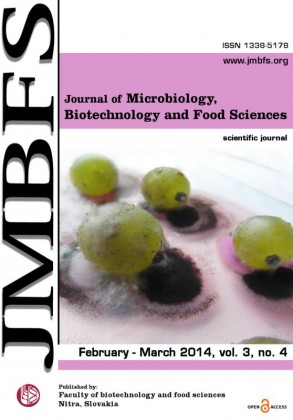HYPOCHOLESTEROLEMIC AND ANTI-OXIDATIVE PROPERTIES OF GERMINATED BROWN RICE (GBR) IN HYPERCHOLESTEROLEMIA-INDUCED RATS
Keywords:
Germinated brown rice, hypercholesterolemia, serum lipid profile, antioxidantAbstract
Hypercholesterolemia, as one of the causes of obesity, affects vital organs in the body, such as the liver and kidney, resulting to oxidative stress. Germinated Brown Rice (GBR) as a food-based solution in dealing with this condition is highly recommended. In this study, the effects of GBR on hypercholesterolemia-induced rats were evaluated by measuring and analyzing the changes on body weight, serum lipid profiles (TC, TG, LDL and HDL), liver function (ALT and AST), kidney function (Crea and Urea) and its antioxidant capacity (MDA, SOD, GSH-PX and TAOC). Thirty (30) SD male rats were divided into 5 groups (6 rats per group); Group A was given normal basal diet, Group B (hypercholesterolemic group) was given a high fat diet, while Groups C, D, and E were given 12.5%, 25% and 50% GBR, respectively. Groups C, D and E were fed with high fat diet for 4 weeks, then fed with the GBR feeds, accordingly, for another 5 weeks. Sera and liver samples were collected for testing and evaluation. Hypercholesterolemia was successfully induced in Groups B, C, D, and E after 4 weeks. Noticeable responses were observed in groups fed with GBR after 5 weeks. Group E fed with 50% GBR showed the satisfactory results (significant at p<0.05) in weight gain, serum lipid profiles, liver function enzymes, creatinine, urea and oxidative stress markers compared to the hypercholesterolemic group. The hypocholesterolemic and antioxidant properties of GBR were found to have a dose-response effect where higher percentage of GBR showed acceptable results as compared to the normal and hypercholesterolemic groups. GBR showed to effectively lessen TC, TG and LDL while increases HDL. It effectively protects the liver while its kidney protective ability was associated to its hypocholesterolemic properties. Oxidative stress was reduced as shown by a decline in lipid peroxidation and improved antioxidant production. In addition, the abovementioned GBR‘s properties are combined effects of its bio-active nutrient components making GBR a complete food that not only deals with the basic nutrient needs of the body but also can deal with metabolic disorders the body encounter.Downloads
Download data is not yet available.
Downloads
Published
2014-02-01
How to Cite
Bernard Matias, F., Wen, Q., Wen, L., Li, R., Tu, D., He, S., Wang, Z., Huang, H., & Wu, J. (2014). HYPOCHOLESTEROLEMIC AND ANTI-OXIDATIVE PROPERTIES OF GERMINATED BROWN RICE (GBR) IN HYPERCHOLESTEROLEMIA-INDUCED RATS. Journal of Microbiology, Biotechnology and Food Sciences, 3(4), 295–298. Retrieved from https://office2.jmbfs.org/index.php/JMBFS/article/view/7017
Issue
Section
Biotechnology
License
Copyright (c) 2014 Froilan Bernard Matias, Qiong Wen, Lixin Wen, Rongfang Li, Di Tu, Shasha He, Zijiu Wang, Haibin Huang, Jing Wu

This work is licensed under a Creative Commons Attribution 4.0 International License.
All papers published in the Journal of Microbiology, Biotechnology and Food Sciences are published under a CC-BY licence (CC-BY 4.0). Published materials can be shared (copy and redistribute the material in any medium or format) and adapted (remix, transform, and build upon the material for any purpose, even commercially) with specifying the author(s).

